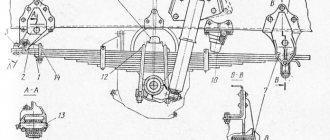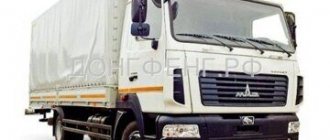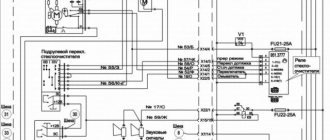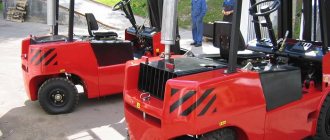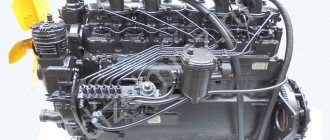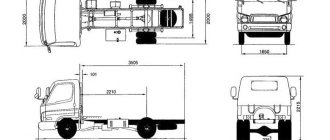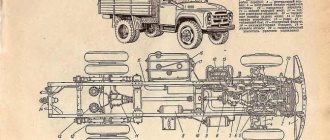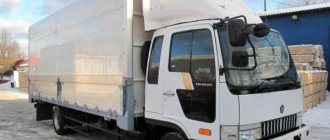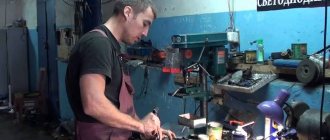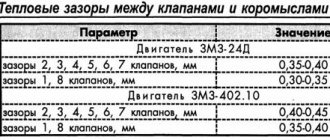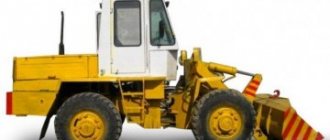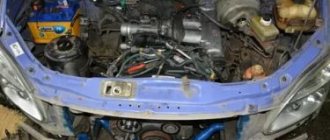- we supply Japanese engines in good technical condition and with minimal mileage in Japan
- We deliver internal combustion engines, automatic transmissions, manual transmissions and other spare parts to all regions of Russia
- All parts we supply are tested before removal in Japan
- all Japanese spare parts reflected on the website are in Russia, cleared by customs and ready for shipment
- installation of a Japanese internal combustion engine in Moscow, in our JTlab car service center
With the help of Japan-engine.ru, you can select and order the necessary Japanese engine and spare parts without much difficulty; our specialists will clarify the compatibility of the new internal combustion engine with your car, and will also offer several options for your choice. Additional information about Japanese used internal combustion engines and spare parts
Contract engines
Contract engines are used engines that were used on cars in Japan, and then were dismantled and delivered to Russia under a contract, which is why they are called contract engines. Such used internal combustion engines have little wear, because The quality of fuels and lubricants and gasoline in China is much better, so the engines are in excellent technical condition. We supply used internal combustion engines with a mileage of no more than 80 thousand km; with proper maintenance, such a Japanese engine will last for many years. Japanese internal combustion engines are assembled at the manufacturer's factory from original spare parts, which is the key to reliability and quality. All Japanese internal combustion engines are supplied fully assembled and have all the necessary documents. The Japanese engine is a fast, efficient and economical solution for repairing the engine of your car.
Nissan Vanette models are a minibus and a truck
Nissan Vanette is a Japanese cabover truck, the production of which began back in 1978. This car has three modifications:
- small truck;
- van;
- 8, 9-seater minibus.
Knowledgeable car enthusiasts associate the Vanette, or as it was also called “Vanechka,” with such qualities as reliability and unpretentiousness, which made it possible to expand the market for its sales to the international level.
History of the development of the Nissan Vanette model range
The history of the development of the Nissan Vanette model range can be divided into four generations.
First generation.
The first representative of the model range was the 1978 minivan, which replaced the Nissan Cherry Cab.
Representatives of this generation were produced in three modifications: a minivan with a seating capacity of 9 people, a truck and a van. Models of this generation had a completely classic appearance for this class of cars.
Second generation.
In 1985, another breakthrough in technological progress significantly influenced the next changes in the design of the minivan: improvement of the air conditioning system, introduction of an innovative braking system (disc brakes), modernization of the car interior, and changes to the instrument panel.
The exterior of the car has also undergone changes, which made it more proportional and interesting for the buyer. In addition, the line of carburetor and injection engines (88 - 120 hp) was replenished with a 2-liter turbodiesel (79 hp). Some representatives of this model were equipped with a 4-speed automatic transmission.
Third generation.
The third modification of the Nissan Vanette was introduced in 1994.
Now the minivan has acquired the features of a European style. The body is represented by a half-hood layout, which made it possible to distribute the weight of the minivan, increase its load capacity to 740 kg, and increase the useful volume to 4.8 m3. The “engine compartment” was also modernized; the car was now equipped with:
- 1.6 liter petrol engine. with a power of 98 horsepower and a 2-liter – 126 horsepower;
- diesel engine CD 20T with a volume of 2 and 2.3 liters
The transmission was represented by a 5-speed manual gearbox and an automatic gearbox. It was during this period that new modifications of the Vanette Cargo and Vanette Combi began to be produced.
Fourth generation.
The fourth generation of this car was released in 1999. The exterior of the car acquired rounded shapes and a bumper that protruded strongly forward. The range of supplied motors has been significantly expanded.
Technical characteristics of cars of the Nissan Vanette model range
| I | II | III | IV | |
| Start year of release | 1978 | 1985 | 1994 | 1999 |
| Model | S120 | S22 | S20, SE, SK | S21, SK |
| Dimensions, m | 3.9x1.6x1755 | 4.36x1.69x1.9 | 4.365x1.69x1.9 | 4.285x1.69x1.985 |
| (Cargo 2.3D) | 4.5x1.695x1.98 | |||
| Clearance, cm | 17 | 15-18,5 | 18,5 | 17 |
| Load capacity, kg | 600-865 | 750-865 | 600-1000 | 750 |
| Turning radius | 4,6-4,9 | 4,3-5,1 | ||
| Tire size | 195/70R15 92Q | 195/70R14 90S | 175/R14-6PRLT | |
| Wheelbase, m | 2,075 | 2,35 | 2,735 | 2,22 |
| Power steering | No | Yes | Yes | Yes |
| Fuel tank, l | 50-55 | 60 | 60 | 53 |
Engine Nissan Vanette
Nissan Vanette cars were equipped with four-cylinder gasoline and diesel engines of varying power. Let's look at two engine modifications.
| Characteristics | Gasoline engine | Diesel engine |
| Working volume, l. | 1,8 | 2,0 |
| Rated power | 66 (90) kW (hp) | 63 (86) kW (hp) |
| Maximum torque, Nm | 135 | 178 |
Features of the “device” of various modifications of Nissan Vanette
Vanette is a truck that was produced in three versions:
1. Minibus with a passenger capacity of up to eight people.
2. Van – Nissan Vanette Cargo.
3. Small truck.
The latest generation of these cars had rounded shapes and a frame structure, which significantly increased the stability and strength of cars of all versions.
This vehicle has good carrying capacity, which allows it to transport cargo in excess of the declared weight.
The car suspension is made in two variations: spring and spring. The majority of cars are equipped with a rear-wheel drive axle, although there are also all-wheel drive modifications (rear-wheel drive Vanette cars have the index VN, and all-wheel drive MN).
The car's braking system is represented by two types: brake drums and brake discs (typical for cars of the latest generation).
The interior of the cars is very elegant: a simple dashboard, an adjustable driver's seat. The luxury version of the Vanette is a Nissan Largo, with velor-covered seats.
Another advantage of the interior of this car is the “transformable” salon, which allows you to adjust the space of the car to any purpose.
The “disadvantages” of these models include:
- extraneous noise when changing gear speeds;
- weak cardan shaft crosspiece;
- low level of sound insulation.
Today it will not be possible to buy a new Nissan Vanette, since its production was completed back in 2011. Fans of Japanese quality can purchase used models for reasonable money.
Contract spare parts
Contract spare parts are parts for Japanese cars brought from Japan to Russia for sale. It should be noted that any part of a car can be called a contract spare part, but by these words we mean parts of a car that has a low mileage in Japan (up to 80 thousand km). We carefully select the best Japanese parts with minimal mileage and this is the key to peace of mind for our customers. At many showdowns you can hear the words parts from Japan, but they have a mileage of 150 thousand km. and are auto waste, be careful when choosing contract spare parts, entrust the selection and supply of spare parts to us and save money.
Nissan Vanette technical specifications
From the very beginning of the appearance of the car model on the motor transport market, the Nissan Vanette received widespread interest from vehicle owners and consumers. Since 1979, four varieties of the car have been produced. When considering the modification of car models, there is a wide variety (I - 4 types; II - 10 types; III - 4 types; IV - 4 types;)
- Model prototype
- Vanette body dimensions and characteristics
- dimensions
- Types of transmission design
- Clearance
- Transmission
- Fuel consumption
- Power
- Owner reviews
Model prototype
Nissan largo, very similar to Vanette. In 1993 it was released as a separate car model. It is designed based on the first generation Serena prototype. Engineers modified and increased the dimensions of the car and did a great job with its capacity. The goal was to increase the interior by 7 or 8 passenger seats, depending on the configuration. The difference in the body from other minivans is the slightly raised headlights and a smaller radiator grille, which looks great.
Vanette body dimensions and characteristics
Body. It has impressive dimensions. Which significantly influences the choice of a car in this series.
Photo of loading a van
The choice of body is of paramount importance when purchasing a car and its further use. The larger the car body, the more difficult it is to drive on city roads. However, there are positive aspects. The larger the dimensions, the safer the car is for the driver and passengers riding and traveling on it.
dimensions
The overall dimensions of vehicles are determined according to the main criteria:
- length, determined from the most prominent place of the front bumper to the most distant place of the rear bumper;
- width, considered at the widest point, such as wheel arches, or B-pillars;
- height, the measurement runs from the ground to the top covering of the body roof, but it must be taken into account that the height of the roof rails is not included in the measurements.
The number of seats in vehicles of this modification model ranges from 2 to 8 seats, depending on the configuration.
A seven or eight seater car is usually an option. Initially, the vehicle is designed as a five-seater, later options are added depending on the purpose, whether it will be a two-seater or an eight-seater model, with additional car seats located in the luggage compartment.
Types of transmission design
Two types of transmission designs are used, the front one is excluded:
- The rear transmission design means that the torque of the motor affects only the rear wheels.
- Full transmission, when the engine torque is transmitted to all wheels of the front and rear axles.
Warranties for contract spare parts
- Warranties do not apply to a used internal combustion engine, like a used product, but we guarantee that all engines are tested in Japan and are in working condition - Warranties do not apply to a used automatic transmission / manual transmission, like a used product, but we guarantee that all automatic/manual transmissions have been tested in Japan and are in working condition - other spare parts are not covered by the warranty as used goods, but we guarantee that all spare parts have been tested in Japan and are in working condition
Engine Nissan HR15DE (1.5L DOHC)
The Nissan HR15DE is a 1.5 L (1498 cc) four-cylinder, 4-stroke petrol engine from the Nissan HR family. This is the same engine as the HR16DE, but has a shorter stroke.
The Nissan HR15DE uses a lightweight aluminum block with a fully balanced five-wheel crankshaft and an aluminum head with dual overhead camshafts (DOHC) and four valves per cylinder (16 valves total).
The HR15DE engine is equipped with electronic throttle control, multi-point fuel injection, variable valve timing (CVTC) on the intake camshaft and an ignition system with individual ignition coil for each spark plug (NDIS, Nissan Direct Ignition System). After modernization in 2006, the engine received two injectors per cylinder and increased maximum power and torque.
Bore and stroke are 78.0 mm and 78.4 mm respectively. The compression ratio is 10.5:1 or 11.0:1 (depending on year and model of vehicle).
The HR15DE engine produces from 99 hp. (73 kW; 98 hp) at 6000 rpm up to 116 hp (85 kW; 114 hp) at 6000 rpm maximum power and from 134 Nm (13.7 kg m) at 4000 rpm to 156 Nm (15.9 kg m) at 3600 rpm maximum torque.
The engine code breakdown is as follows:
- HR - engine family
- 15 - 1.5 liters
- D - DOHC (double camshafts)
- E - multipoint fuel injection
| HR15DE engine characteristics | |
| Engine code | HR15DE |
| View | Four-stroke Inline-4 |
| Fuel type | Petrol |
| Years of production | 2004- |
| Volume | 1.5 l, 1498 cm 3 |
| Fuel system | Multipoint fuel injection |
| Turbine | — |
| Horsepower | Version with one injector: 109 hp. (80 kW; 107 hp) at 6000 rpm Twin injector version: 99 hp (73 kW; 98 hp) at 6000 rpm 102 hp (75 kW; 101 hp) at 6000 rpm 111.5 hp (82 kW; 110 hp) at 5600 rpm 114 hp (84 kW; 113 hp) at 6000 rpm 116 hp (85 kW; 114 hp) at 6000 rpm |
| Torque | Single injector version: 148 N⋅m (15.1 kg⋅m; 109.22 ft⋅lb) at 4,400 rpm Twin injector version: 134 N⋅m (13.7 kg⋅m) at 4,000 rpm 136 N⋅m ( 13.9 kg m) at 4000 rpm 139 Nm (14.2 kg m) at 4200 rpm 150 Nm (15.3 kg m) at 4200 rpm 156 Nm (15.9 kg m) m) at 3600 rpm |
| Cylinder operating order | 1-3-4-2 |
| Dimensions (L × H × W) | — |
| Weight | — |
Cylinder block HR15DE
The HR15DE has a five-post aluminum cylinder block. The cylinders are offset to minimize friction caused by the angle of the connecting rod as the piston descends into the cylinder. The resulting smoother reciprocating motion of the pistons contributes to high power and torque output and fuel economy. Also, the HR15DE engine is designed in such a way that the piston remains at the top of the cylinder longer than in a conventional engine. This allows combustion energy to be used more efficiently and effectively increases thermal efficiency.
The HR15DE has cranks that are treated to resist cracking. These integrally cast connecting rods provide less weight than conventional connecting rods, which are made of two parts separated at the eye where they connect to the crankshaft. The connecting rod processed by cracking is made in one piece, then the lower eye of the connecting rod is broken into two parts (cracking process), and finally the two parts are joined together after installation. The mating of uneven surfaces created by the breaking process results in a very precise connection. The engine has two compression and one oil control rings.
The crankshaft and camshaft journals are finished with polishing tape for a mirror finish. The result is a complete reduction in friction on these bearing surfaces of key engine components.
| Cylinder block | |
| Alloy | aluminum |
| Compression Ratio | 10.5:1 or 11.0:1 (depending on vehicle model) |
| Cylinder diameter | 78,0 |
| Piston stroke | 78,4 |
| Piston rings: compression/oil | 2/1 |
| Main bearings | 5 |
| Cylinder inner diameter | 78.000-78.015 |
| Piston skirt diameter | 77,965-77,980 |
| Piston ring side clearance | upper 0.040-0.080 |
| second 0.030-0.070 | |
| oil 0.045-0.125 | |
| Piston ring ring clearance | upper 0.20-0.30 |
| second 0.35-0.50 | |
| oil 0.20-0.60 | |
| Crankshaft journal diameter | 47,979–47,978 |
| Connecting rod diameter | 39,971-39,970 |
HR15DE cylinder head
The cylinder head is made of aluminum alloy, each camshaft is supported by five bearings. The HR15DE has variable valve timing (CVTC) on the intake side. This system provides the ability to change valve timing depending on engine speed and throttle opening. Improved control and reduced system friction improve response and optimize torque characteristics.
The engine has a plastic intake manifold with a built-in control valve. The HR15DE engine is equipped with an exhaust gas recirculation system.
| cylinder head | |
| Timing type | DOHC, chain drive |
| Valves | 16 (4 valves per cylinder) |
| Inlet/outlet speed | — |
| Valve disc diameter | FENCE 31.0-31.3 |
| GRADUATION 25.3-25.6 | |
| Valve length | FENCE 101.65 |
| GRADUATION 102.46 | |
Head tightening procedure and torque specifications:
- Step 1: 40 Nm; 4.1 kg m
- Step 2: Turn all bolts 60°.
- Step 3: Completely loosen all bolts
- Step 4: 40 Nm; 4.1 kg m
- Step 5: Rotate all bolts 75°
- Step 6. Turn all bolts another 75°.
Camshaft sprocket bolt
● 78.4 Nm; 8.0 kg m
| Valve clearances | |
| Inlet valve (hot) | 0,304-0,416 |
| Exhaust valve (hot) | 0,308-0,432 |
| Compression ratio | |
| Standard | 15.5 kg / m 2 / 200 rpm |
| Engine oil | |
| Engine oil | 0W-20, 5W-30 |
| API oil type | — |
| How much oil is in the engine, l | With filter replacement 3.0 l |
| Without filter change 2.8 l | |
| Oil change carried out, km | 5000-10 000 |
| Ignition system | |
| Spark plug | DENSO: FXE20HE-11 |
| Spark gap | 1,1 |
| The engine is installed in: | |
| Model | Years of manufacture |
| Nissan Tiida (C11) | 2004-2012 |
| Nissan Tiida Latio (C11) | 2004-2012 |
| Nissan Note | 2005-2012 |
| Nissan Cube / Nissan Cube Cubic (Z11, Z12) | 2005-2008 |
| Nissan March (K12) | 2005-2010 |
| Nissan March NISMO S (K13) | – |
| Nissan Wingroad (Y12) | 2005- |
| Nissan Bluebird Silfy (G11) | 2005-2012 |
| Nissan AD Van / AD Expert (Y12) | 2006- |
| Nissan Grand Livina | – |
| Nissan Juke | 2010 |
| Nissan Sunny (B17) | 2011- |
| Nissan Almera (B17) | 2011- |
| Renault SCARA | 2012- |
| Nissan Micra (Middle East) | – |
Denis is a car specialist. He has 5 years of experience working in a service station and writes about news in the automotive world. Now he shares his knowledge with people, talks about the design and repair of modern cars.
